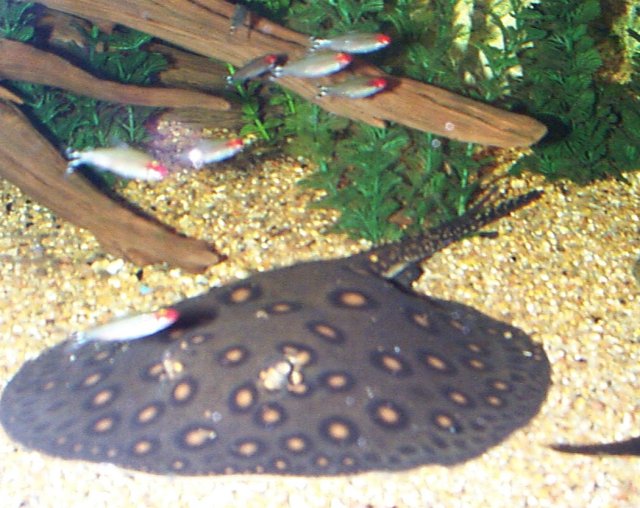Physical description:

max size: 45cm (18 inches)
Body length up to 18 inches.
Weight 8-10 lb.
Color is golden with dark spots.
Tail has a barb on the base.
Ears are just behind the eyes.
Background
The motoro is one of three main species of the Potamotrygonidae
family. The three main genera of freshwater stingrays from South America
are Potamotrygon, Plesiotrygon and Paratrygon. The motoro ray is
in the species Potamotrygon. The origin of the Potamotrygon is that
they are usually neotropical river stingrays that have adapted to freshwater
by using a salt secreting rectal gland as well as a suppressed concentration
of urea in body fluids. These stingrays are normally found at the bottom
of rivers feeding on almost anything on the river bottom. The typical
diet in the wild is mainly small fishes, insects and crustaceans.
They also posses a powerful sting that can cause severe pain that normally
requires medical attention. The stingers are replaced up to three times
a year. The species are typically not very fast swimmers. The
technique used in order to capture prey is to trap the prey under its disc,
then slowly adjusting its mouth to the trapped prey until they can swallow
it. |